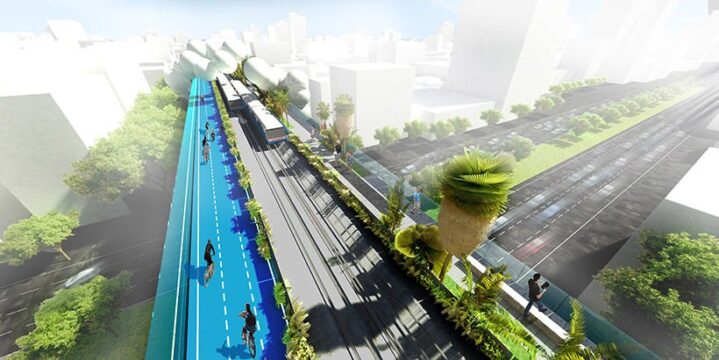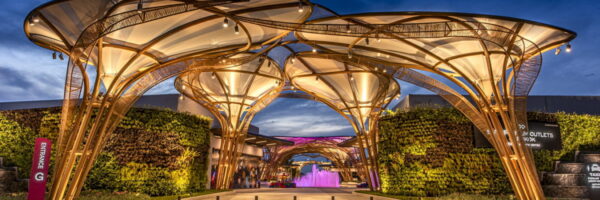
Bangkok’s Skypark could inspire more green areas across the region
“It is an example of how to repurpose an abandoned structure and increase green spaces in Bangkok through cost-effective design.”
Bangkok’s new “Skypark,” built on an abandoned, never-completed Skytrain track, could become be a model for turning the capital’s unused spaces into much-needed green areas. Such an initiative would also boost public health and mitigate the impacts of climate change, urban experts told Reuters. Chao Phraya Skypark, scheduled to open later this month, connects neighbourhoods on both sides of the Chao Phraya river. The new green space is built on an elevated rail line that lay unused for more than 30 years.
According to the director of the Urban Design and Development Centre, a consultancy that led the project:
“It may not be large, but it has outsized importance as a catalyst for urban regeneration. What’s more it can also change the way people look at public spaces. It is an example of how to repurpose an abandoned structure and increase green spaces in Bangkok through cost-effective design.”
The shortage of green spaces in Bangkok and other crowded cities has recently come under heavy scrutiny, triggering a rush to parks for exercise, fresh air and sunlight. According to a study last year by the Barcelona Institute for Global Health, the health benefits are clear: city dwellers tend to live longer in leafy neighbourhoods.
Bangkok is predicted by some climate experts to be an urban area among those hardest hit by extreme weather conditions in coming years. Flooding is already common during the monsoon season, but by 2030 nearly 40% of the city could become flooded each year due to more intense rainfall, according to World Bank estimates.
Skypark, measuring 280 meters by 8 meters, makes it easier for residents to access nearby schools, markets and places of worship, The goal, according to the UDDC director, is to replicate Paris’s “15-minute city”, where people can reach their destination within 15 minutes of walking, cycling or using mass transit.”
Throughout Asia’s space-starved metropolises, developers and planners are increasingly turning to so-called “dead land” under bridges, flyovers and viaducts.
“Chao Phraya Skypark can be a model for swathes of unused land under the city’s expressways. Parks and rooftop gardens can reduce air pollution and harmful emissions, and also limit flooding.
“With Skypark we have shown it is possible to create green spaces from existing structures that can be valuable in fighting climate change.”



